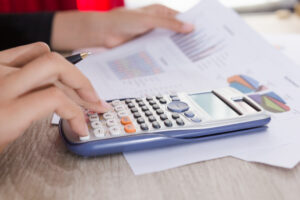Accessory apartments, secondary suites, in-law suites, and granny flats are all names for a unique type of housing unit. Accessory dwelling units (ADU) are smaller, independent residential dwelling units located on the same lot as a stand-alone (i.e., detached) single-family home. ADUs have the potential to increase housing affordability for homeowners and tenants, create a wider range of housing options within a community, and facilitate better use of the existing housing fabric in established neighborhoods (American Planning Association).
Many cities and counties are showing support for ADUs in their plans and are adopting zoning regulations that permit ADUs in low-density residential areas. In fact, a 2023 California state law mandates that by January 1, 2025, local jurisdictions must establish a program to preapprove ADU projects, simplifying the process for everyone involved (Pro Builder).
Characteristics of ADUs
Some distinguishing characteristics that help define, differentiate, and distinguish ADUs from other housing types are:
- ADUs are accessory and adjacent to a primary housing unit.
- ADUs are significantly smaller than the average US house.
- ADUs tend to be one of two units owned by one owner on a single family residential lot.
- ADUs tend to be developed asynchronously from the primary house by homeowner developers.
- A large range of municipal land use and zoning regulations differentiate ADU types and styles, and dramatically affect their allowed uses.
- Vast numbers of informal ADUs exist compared to permitted ADUs.
New Online Tool for ADUs
To help California communities increase their housing supply, Community Planning Collaborative (CPC), a housing policy and community engagement company, has developed an online platform in conjunction with the new law, making it easy to manage authorized housing plans and find ADU projects worth pursuing. CPC’s Plans Gallery lets local officials review and preapprove ADU plans submitted by architects and developers. Jurisdictions can add specs for prefabricated units and predesigned site-built plans to ADU galleries within the platform.
Similar to a shopping app, residents interested in building an ADU on their property can view approved units by features like location, size, and amenities, among other filters. Unit profiles include information like expected construction cost, floor plans and unit descriptions. Residents can also contact the developers so that interested parties can proceed (Route Fifty).
Benefits of ADUs
Economically, ADUs provide flexible housing options in central city neighborhoods, utilize existing governmental infrastructure (eg. roads, sewers, schools), and reduce the demand for expanding infrastructure in the sprawling reaches of a developed metropolitan area. In California, the share of multigenerational households in San Diego County is about 9%, which is above average and in the middle of the pack across the state. More than 71,000 families in the county live with multiple generations in their homes, making ADUs an ideal way to increase the availability of affordable housing (Axios).
ADUs generally leave a smaller environmental footprint. New, detached ADUs provide rental housing that is 44% smaller per capita than standard, new single family rental units. Overall, new ADUs provide housing that is 33% smaller per capita than standard, new single-family units. In a building lifecycle, smaller residential spaces use less energy in construction, deconstruction, and habitation (Building An ADU).
The Future for ADUs
As ADUs are growing in popularity across the U.S., some cities are improving their ordinances and development regulations to make ADUs easier to build. California is leading the charge, with more laws being passed to make ADU development more feasible. However, in places like Seattle, resistance to change may halt efforts to improve ADU regulations in the short term (Route Fifty).
The change in household size has drastically decreased over the years, with most in the U.S. now being 1 and 2 person households. With interest rates and construction costs increasing and displacement continues, creating affordable housing is becoming more necessary. Building more ADUs will help create compact, transit-rich, walkable, mixed-use, mixed-income cities that are critical ingredients to a sustainable and equitable future.







